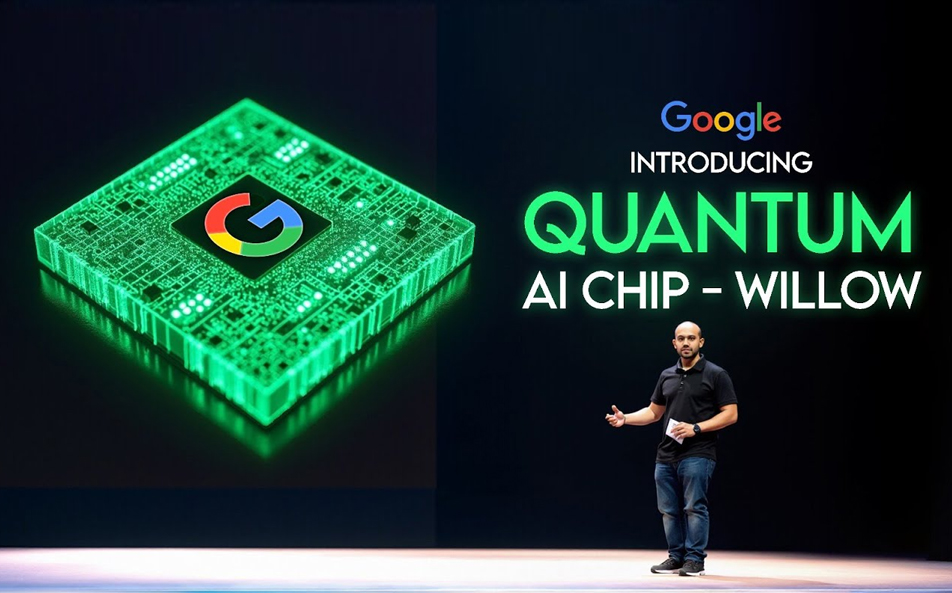Key Takeaways
- Google’s Willow quantum computer successfully simulated molecular structures using a new protocol called Quantum Echoes.
- The system could enhance Nuclear Magnetic Resonance (NMR) spectroscopy, a key technique in chemistry, biology, and materials science.
- While promising, Quantum Echoes is still experimental, with limited real-world advantage over conventional supercomputers—for now.
Google’s Quantum Leap in Molecular Science
In a breakthrough that bridges quantum computing and molecular science, Google Quantum AI has demonstrated how its Willow quantum computer could one day revolutionize the study of molecular structures. Using a new protocol dubbed Quantum Echoes, the research team applied quantum principles to interpret data from Nuclear Magnetic Resonance (NMR) spectroscopy — one of the most fundamental tools in chemistry, biology, and materials science.
The achievement signals a new era for quantum-assisted molecular analysis, showing how quantum computers can “speak the same language as nature,” as Google researcher Hartmut Neven puts it. While the technology remains in its early stages, the experiment marks one of the clearest examples yet of a quantum computer meaningfully augmenting a standard scientific technique.
What Is Quantum Echoes — and How Does It Work?
The concept behind Quantum Echoes draws inspiration from chaos theory and the butterfly effect — where small perturbations can trigger large-scale consequences. In the Willow experiment, Google’s researchers applied a sequence of quantum operations across 103 qubits, then deliberately disturbed one “quantum butterfly” qubit. They reversed the operations to simulate time running backward, analyzing the resulting system changes to extract molecular information.
This method parallels how NMR spectroscopy works in conventional labs, where electromagnetic waves nudge molecules and scientists analyze how they respond. By mimicking this process in a quantum system, the Willow computer effectively creates a quantum mirror of real molecular behavior — potentially allowing researchers to “see” the structure of molecules at resolutions beyond what NMR alone can achieve.
As Google Quantum AI’s Tom O’Brien described it, “We’re building a longer molecular ruler.”
A Promising Yet Preliminary Step
Despite the impressive demonstration, the current experiment remains a proof of concept. Google’s team only used up to 15 qubits simultaneously, and the resulting data could still be replicated using conventional computing techniques. However, the fact that two separate quantum computers running Quantum Echoes produced identical results — something rare for quantum algorithms — points to major progress in hardware reliability.
O’Brien emphasized that as error rates continue to drop and qubit performance improves, the Quantum Echoes protocol will be capable of handling more complex molecules. For now, its utility is mainly theoretical, though the work hints at a future where quantum processors become integral to drug discovery, biomolecular research, and advanced materials development.
Keith Fratus of HQS Quantum Simulations called the connection between NMR and quantum computing “an important and relevant step,” adding that while the approach may initially serve niche biological studies, its broader potential is significant.
Also read : Inside Football’s Fortune Factory: The Premier League’s Highest-Paid Players of 2025
Quantum Computing’s Expanding Frontier
Experts outside Google say the experiment highlights both the promise and limits of current quantum systems. Dries Sels of New York University noted that Quantum Echoes represents “a larger quantum computer and more complex NMR protocols” than previously attempted, calling it one of the few industrially relevant demonstrations of quantum simulation to date.
However, as Curt von Keyserlingk of King’s College London pointed out, Willow’s performance still doesn’t surpass what top-tier classical computers can do. For now, the protocol’s main appeal lies in fundamental quantum research rather than immediate practical use.
Still, with traditional computing nearing its physical limits, even incremental quantum gains are valuable. As researchers refine these algorithms and hardware scales improve, the intersection of quantum computing and molecular chemistry could reshape how scientists understand matter itself.
Conclusion: A Quantum Glimpse into the Molecular Future
Google’s Willow experiment shows how quantum computing is evolving from theory to practical application. By pairing the Quantum Echoes protocol with established molecular techniques like NMR, researchers are opening the door to faster, more precise molecular analysis — the kind that could accelerate drug discovery, biomaterial design, and quantum chemistry alike.
It’s still early days, and Willow hasn’t yet outperformed classical computers. But as quantum processors become larger, cleaner, and more stable, the Quantum Echoes experiment could one day be seen as a turning point — the moment quantum computers began revealing the molecular secrets of the universe, one qubit at a time.




